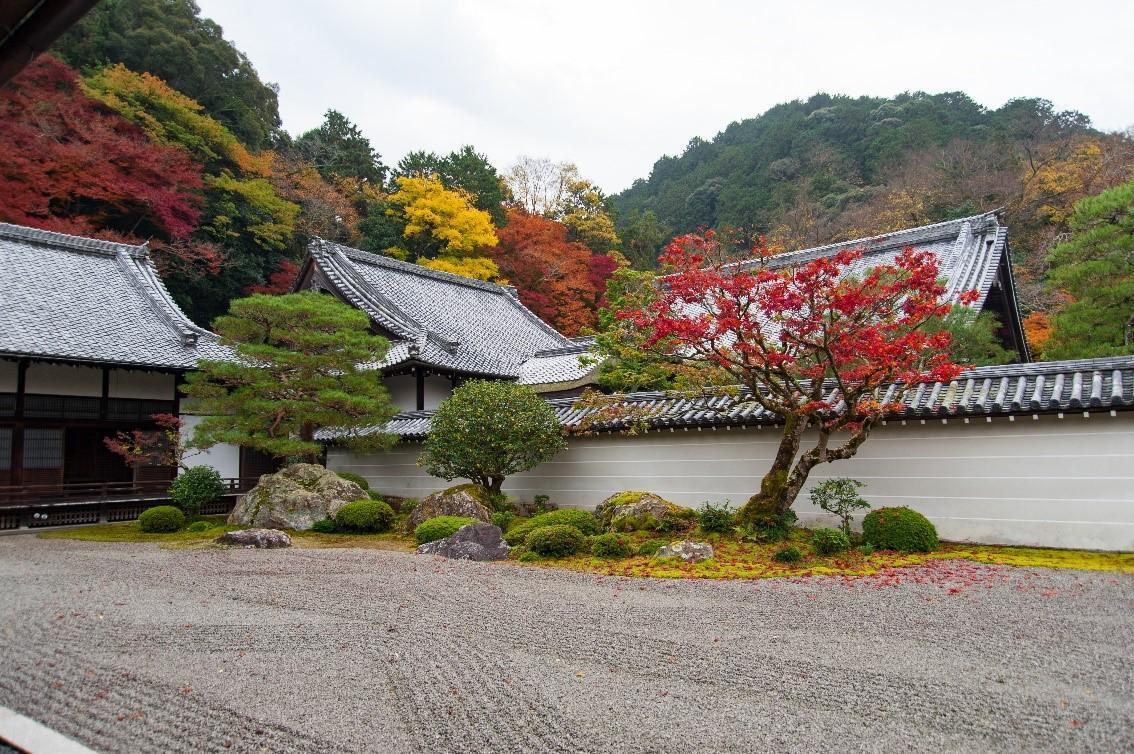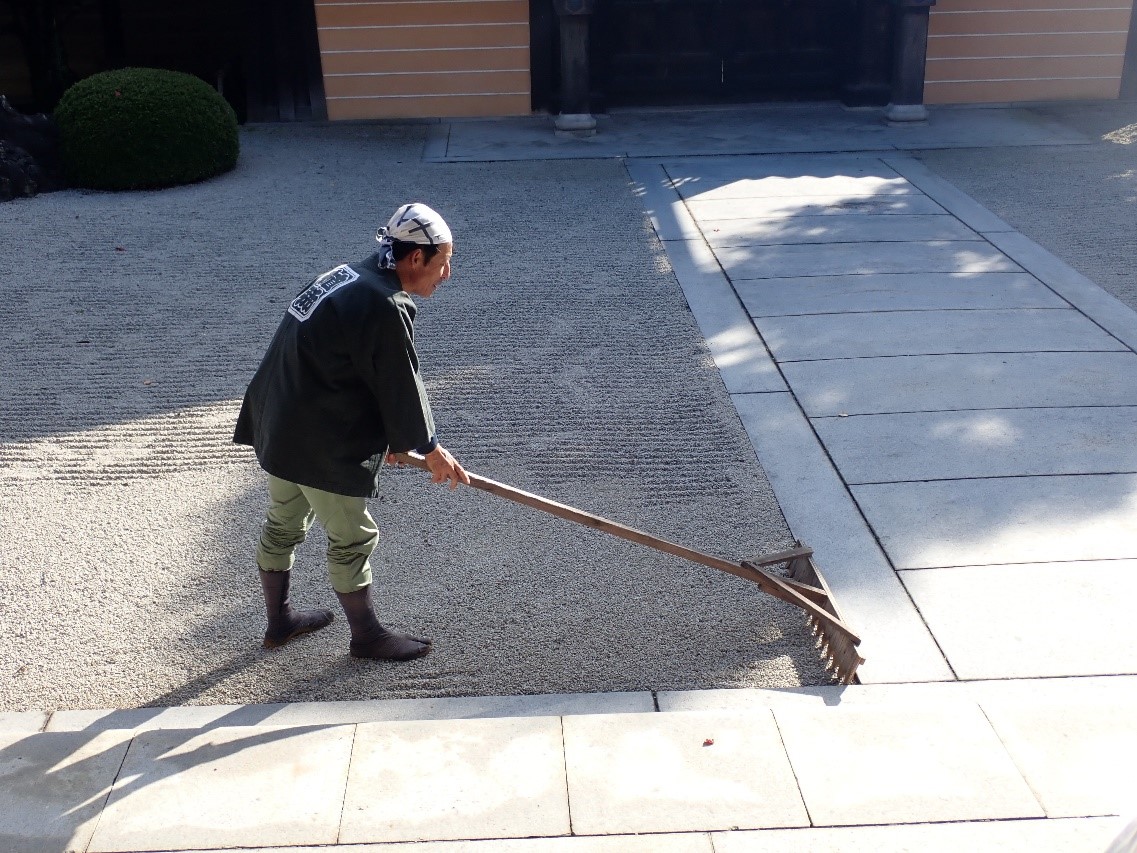Keywords: The Ueyakato Landscape Research Team's Japanese Garden Lexicon
Karesansui: The Dry Landscape Garden
2021/10/13

Ueyakato Landscape has managed Nanzen-ji Temple’s famous dry landscape garden for over 170 years, forming the foundation of our expertise in creating and nurturing this essential Japanese garden form.
Karesansui: The Dry Landscape Garden
Sometimes known in English as the Zen garden or Japanese rock garden, the dry landscape garden (or “karesansui”) is one of the most signature forms in Japan’s gardening tradition. Its basic components are often astoundingly simple. Typical examples feature little more than a stone arrangement juxtaposed with a sea of gravel, with some moss, shrubs, and trees added to complete the composition. Yet this seemingly hyper-minimalist aesthetic also conceals deceptive difficulty. Using the dry landscape garden form effectively—in a way that manifests new possibilities hiding in a limited amount of space—is about as demanding a challenge as a gardener could ask for.
How did a garden whose definitive feature is the absence of water become such a prominent and enduring presence in the history of Japan’s man-made landscapes? The origins of the “karesansui” approach date back at least to the pond gardens that were created for Kyoto’s court nobility in the late eleventh century, when we see references to the possibility of “erecting stones” as an alternative to water “in places where there is neither pond nor stream.” But in the fourteenth and fifteenth centuries, dry landscapes were superbly suited to the new settings of Zen Buddhist temples, with their confined monasteries enclosed in the mountains where water could not be used. Luckily, magma hardened over dozens of millennia into granite on the eastern side of Kyoto’s topography provided access to copious amounts of “Shirakawa-suna”—a luminous white gravel obtainable only from the city’s Shirakawa river. Thus was born a unique opportunity to create landscapes suggesting the presence of water where there was none.
Whether or not the karesansui garden is itself an expression of Zen philosophy is interesting to consider, but that its imagined waterscapes opened a new chapter in the history of Japanese gardens as objects for seated contemplation seems uncontestable. Little wonder, then, that this simple yet remarkably versatile garden proliferated widely, adapting its serenity to diverse urban spaces across Kyoto. In our present age, we see this same proliferation of the dry landscape garden throughout the world, making a profoundly deep knowledge of this quintessential garden form a requisite qualification of any Japanese landscaping firm today.

An Ueyakato Landscape gardener rakes placid ripples on the surface of the dry landscape garden at Konkai-Komkyo-ji Temple, another Kyoto temple whom we are privileged to serve as their exclusive gardening company.
